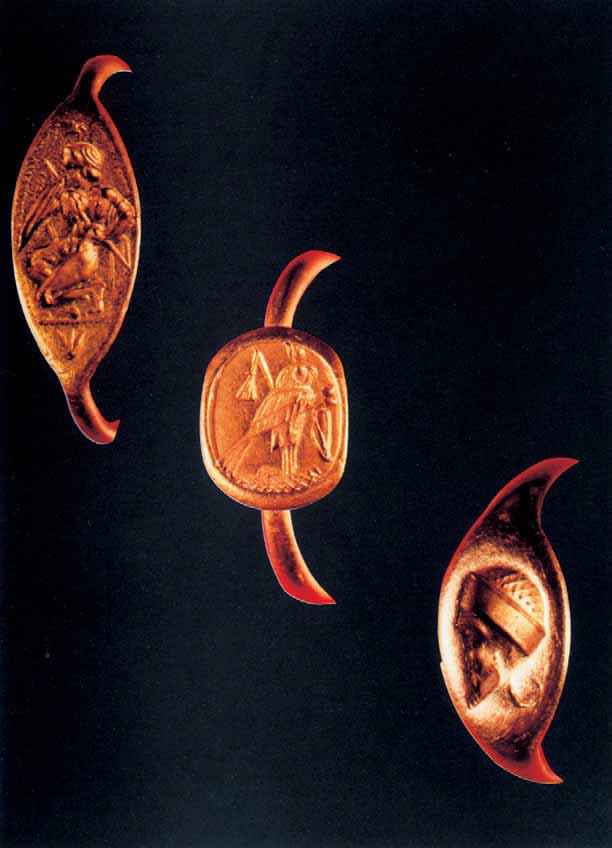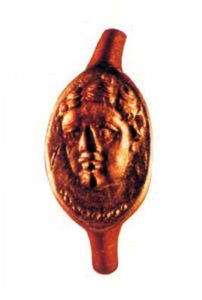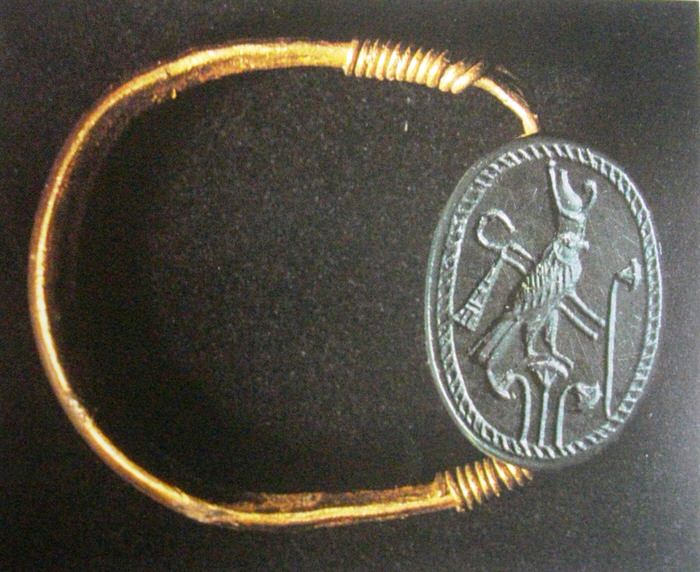Gold ring with engraved setting
Variously shaped jewellery in gold, silver and other precious metals was unearthed from the necropolis in Sulky. One of the most beautiful specimens is made of gold and has a typical shape known as "stirrup-shaped" (fig. 1); the ring’s setting has an engraving of the image of Horus in the form of a falcon, standing to the right, with the insignia of the Pharaonic power (the crown of Upper and Lower Egypt, the whip), resting on a palmetto, which also depicts an uraeus discus bearer, facing right as well, who stands before the falcon; the central image is inserted within a string frame which follows the contour of the setting (fig. 2).


There are many other examples of this ring type in the Punic world. For example, many have been found in the necropolis of Tharros, with the same iconography of Horus and several other topics (fig. 3), also found among Sulcis artefacts (fig. 4).


Jewels are one of the most characteristic and significant aspects of Phoenician-Punic craftsmanship.
What were the jewels used for? As also occurs today, these precious objects had an ornamental function and they also demonstrated belonging to families with a large disposable income. When decorated with figures such as Horus, the uraeus and the palmetto, they were also a kind of amulet, which protected both the living and the dead from evil forces; the above-mentioned iconography, in fact, is also found on other types of objects, such as for example scarabs (fig. 5).

Bibliografia
- E. ACQUARO, Arte e cultura punica in Sardegna, Sassari 1984.
- S. MOSCATI, L’arte dei Fenici, Roma 1990.
- G. PISANO, I gioielli, in Aa. Vv., I Fenici, Milano 1989, pp. 370-393.
- G. QUATTROCCHI PISANO, I gioielli fenici di Tharros nel Museo Nazionale di Cagliari, Roma 1974.

 VR
VR